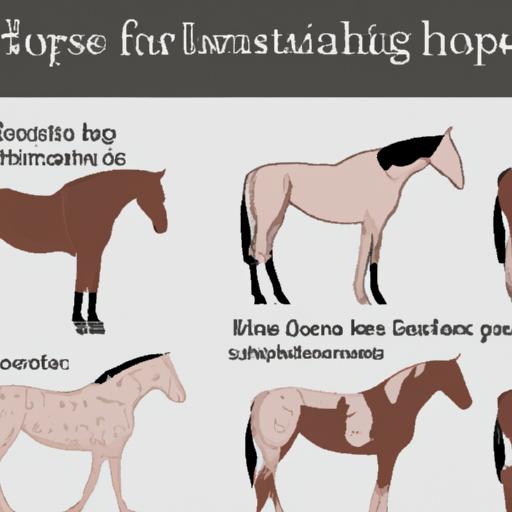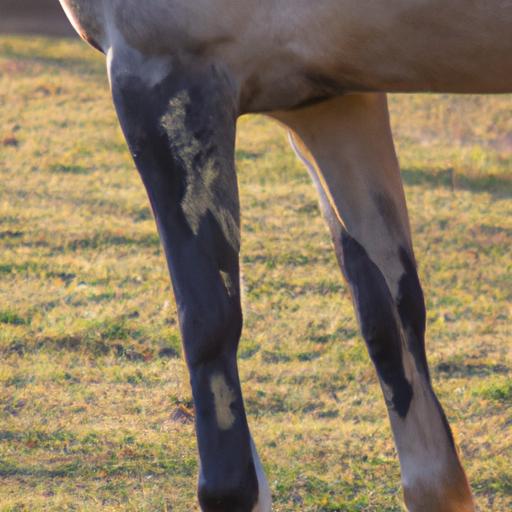Discover the essential steps for ongoing horse care for cuts. From creating a clean environment to regular wound cleaning, learn how to promote healing.
Horse care goes beyond grooming and feeding; it extends to tending to their health and well-being. One aspect of horse care that requires special attention is the management of cuts and wounds. These injuries can range from minor scrapes to deep lacerations, and knowing how to provide proper care is crucial for your horse’s recovery. In this article, we will explore the significance of horse care for cuts and provide an overview of common horse injuries.
Why is horse care for cuts so vital?
When your horse sustains a cut, it’s not just a matter of physical discomfort; it can impact their overall health and performance. Proper care ensures that wounds heal efficiently, minimizing the risk of infection and other complications. Neglecting to adequately tend to these injuries can lead to long-term consequences and even jeopardize your horse’s well-being.
An overview of common horse injuries
Horses are active and inquisitive creatures, which can occasionally result in injuries. Some common horse injuries include cuts, abrasions, punctures, and lacerations. These injuries can occur due to various reasons such as accidents, encounters with sharp objects, or even interactions with other animals. Understanding the types of injuries that horses commonly experience helps us recognize and address them promptly.
Remember, as a responsible horse owner, it’s essential to be well-informed about horse care for cuts. By doing so, you’ll be equipped to handle these situations effectively and ensure your equine companion’s speedy recovery. In the next section, we will delve deeper into understanding horse cuts, including their types and causes.
Understanding Horse Cuts

Types of cuts and their severity
When it comes to horse cuts, understanding the different types and their severity is essential for appropriate care. Here are some common types of cuts that horses may experience:
-
Superficial cuts: These are shallow wounds that typically affect only the outer layers of the skin. Superficial cuts often result from minor scrapes or grazing against rough surfaces.
-
Deep cuts: Deep cuts penetrate through multiple layers of tissue, including the skin, muscles, or tendons. These injuries can be more severe and may require immediate veterinary attention.
-
Puncture wounds: Puncture wounds occur when a sharp object, such as a nail or a piece of wire, penetrates the horse’s skin. These wounds can be deceptive as the entry point may be small, but the damage underneath can be significant.
-
Lacerations: Lacerations are long, deep cuts that often occur due to sharp objects or trauma. They can involve muscle and tissue damage and may require sutures or staples for proper healing.
The severity of a horse cut depends on various factors, including the depth, location, and potential involvement of vital structures. It’s crucial to assess the severity accurately to determine the appropriate course of action.
Causes of horse cuts
Horses can be prone to cuts due to their curious nature and the surrounding environment. Here are some common causes of horse cuts:
-
Fencing accidents: Horses may accidentally collide with sharp edges or protruding objects on fences, resulting in cuts and wounds.
-
Stable accidents: Within the stable, horses can get caught on sharp edges, nails, or splinters, leading to cuts and injuries.
-
Field hazards: Horses can encounter sharp objects, such as broken branches or debris, while grazing or playing in the field, leading to cuts.
-
Interactions with other animals: When horses interact with other animals, such as dogs or wildlife, there is a risk of scratches or bites that can result in cuts.
Understanding the different types of cuts and their causes is the first step towards effective horse care for cuts. In the next section, we will explore how to assess wounds and identify signs of infection or complications.
Assessing the Wound
Step-by-step guide to evaluating horse cuts
When your horse sustains a cut, it’s crucial to assess the wound promptly to determine the severity and appropriate course of action. Follow these steps to evaluate horse cuts effectively:
-
Clean your hands and gather necessary supplies: Before approaching the wound, ensure your hands are clean to prevent introducing bacteria. Collect items such as gloves, clean towels or gauze, and a flashlight for better visibility.
-
Approach the horse calmly: Approach your horse calmly and gently to avoid agitating them further. Speak in soothing tones to maintain a sense of trust and cooperation.
-
Inspect the wound: Carefully observe the wound’s size, depth, and location. Note any bleeding, debris, or foreign objects present. It’s crucial to assess the extent of the injury to determine the appropriate treatment.
-
Check for signs of infection or complications: Look for signs of infection, such as redness, swelling, discharge, or foul odor. Additionally, keep an eye out for any signs of complications like lameness, heat in the surrounding area, or increased pain.
Identifying signs of infection or complications
Identifying signs of infection or complications is vital to prevent further harm to your horse. Here are some key indicators to watch out for:
-
Redness and swelling: If the wound appears redder than usual and exhibits noticeable swelling, it may indicate an infection or an inflammatory response.
-
Discharge and foul odor: Excessive discharge from the wound, especially if it appears pus-like and emits a foul odor, can be indicative of infection.
-
Increased pain or sensitivity: If your horse displays heightened discomfort, such as increased sensitivity or reluctance to put weight on the affected limb, it suggests possible complications.
-
Lameness or abnormal behavior: Lameness or changes in behavior, such as excessive restlessness or lethargy, may be signs of underlying issues related to the wound.
By carefully assessing the wound and recognizing signs of infection or complications, you can take appropriate actions to ensure your horse receives the necessary care. In the next section, we will discuss immediate first aid techniques for horse cuts to aid in their healing process.
Immediate First Aid for Horse Cuts
Horse cuts require immediate attention to prevent further complications and aid in the healing process. When faced with a cut on your horse, it’s crucial to provide immediate first aid. Here are the necessary steps to take:
Cleaning the wound properly
The first step in providing immediate first aid for horse cuts is to clean the wound thoroughly. Start by gently rinsing the area with clean water to remove any debris or dirt. Use a mild antiseptic solution recommended by your veterinarian to disinfect the wound and reduce the risk of infection. Be cautious not to use harsh substances that may further irritate the wound. Remember, gentle and thorough cleaning is key to promoting proper healing.
Applying necessary bandages or dressings
Once the wound is clean, it’s vital to apply the appropriate bandage or dressing to protect the area from further contamination and aid in healing. Use sterile gauze pads or non-stick dressings to cover the wound. Secure the dressing with a cohesive bandage or adhesive tape. Ensure that the bandage is snug but not too tight, as it should allow for proper circulation. Regularly check and change the bandage as instructed by your veterinarian to maintain cleanliness and monitor the healing progress.
Administering pain relief, if necessary
In some cases, horse cuts can be painful for your equine companion. If your horse appears to be in discomfort, consult your veterinarian for suitable pain relief medication. Administering pain relief can help alleviate their discomfort and allow them to rest and heal more comfortably. However, always follow your veterinarian’s guidance and dosage instructions when administering any medication.
Remember, immediate first aid for horse cuts is crucial for the well-being and recovery of your horse. By cleaning the wound properly, applying necessary bandages or dressings, and administering pain relief if necessary, you are taking proactive steps to ensure your horse’s comfort and minimize the chances of complications. In the next section, we will discuss ongoing care and treatment for horse cuts.
Conclusion: Prioritize Your Horse’s Well-being with Horse Care for Cuts
In conclusion, proper horse care for cuts plays a pivotal role in maintaining your equine companion’s health and well-being. By understanding the importance of promptly addressing and treating these injuries, you can ensure a speedy recovery and minimize the risk of complications.
Throughout this article, we explored the significance of horse care for cuts and provided an overview of common horse injuries. We discussed the need to create a clean and safe environment for wound healing, emphasizing the importance of regular dressing changes and wound cleaning. Additionally, we highlighted the benefits of utilizing topical treatments and medications to aid in the healing process.
Prevention is always better than cure, and ensuring your horse’s safety is crucial in minimizing the risk of cuts. Implementing strategies such as maintaining safe surroundings, avoiding hazardous objects, and practicing appropriate horse-handling techniques can drastically reduce the likelihood of injuries.
Remember, regular veterinary check-ups are essential for early detection and proper management of any existing or potential health issues. Consulting with a professional equine veterinarian can provide valuable insights and guidance specific to your horse’s needs.
At Horsemasterypro.com, we prioritize the well-being of horses and aim to educate horse owners on all aspects of horse care. By following the guidelines and advice outlined in this article, you can be confident in providing optimal care for your horse’s cuts and ensuring their long-term health and happiness.
Stay proactive, stay vigilant, and let’s make sure our beloved equine companions receive the care they deserve.
Bolded: Horsemasterypro.com


